 Previous Article
Previous Article
Cost Of Installing Composite Decking
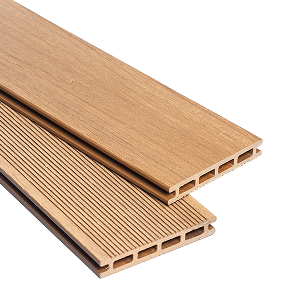
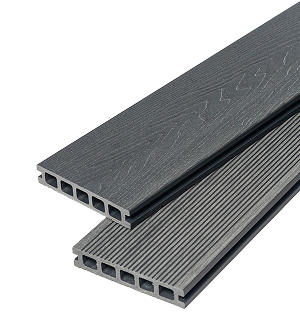
Thinking of Laying Decking Tiles on Grass?
If you have a lawn you’re looking to cover, laying interlocking decking tiles directly onto the grass can appear to be a quick and easy garden fix. But whilst you could do it, the real question is – ‘Should you?’ From our years of expertise, we’ve seen that this approach has lead to many problems down the line.
A proper foundation is essential for any decking project that you want to last. In this article, we’ll walk you through the proper way to prepare your project area and suggest a list of methods to provide longevity to your project, rewarding your hard work.
Most decking tiles today are an easy installation and can be clipped to one another. Other varieties of decking tiles have specific instructions provided by the manufacturer to guide you through their installation, if you’re planning to install them yourself – be sure to read the manual first. But as far as decking tiles go, it’s very easy to install and can be done without any prior experience.
Installation of decking tiles might be easy, but this doesn’t mean you should skip the key fundamentals and place it directly onto your lawn. Placing any decking material (especially wood tiles) directly onto a soft surface like grass is not advisable for a long-term project.
Most soil in the UK is almost always damp; direct contact with wet grass or soil traps this moisture beneath the tiles. Most wood will swell due to moisture retention and then shrink when it dries; over time this will deteriorate the integrity of the wood – a major problem, as the wood will absorb the moisture, causing it to swell and rapidly break-down and rot.
Grass and topsoil are often soft and uneven; placing tiles directly on top will create an unstable surface that moves underfoot. Over time, the tiles will sink into the ground at varying and uneven rates, creating a wobbly and unsafe trip/slip hazard.
The lack of airflow space between the earth and the tiles creates a dark, damp environment – the perfect breeding ground for mould and mildew. It also makes the tiles highly susceptible to damage from insects living in the soil.
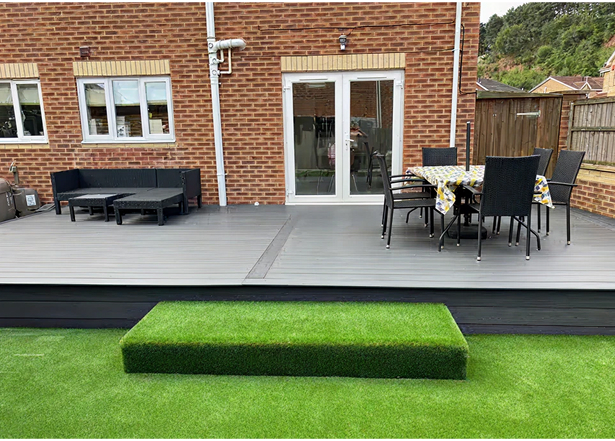
Expert Tip: Dark and damp environments increase the likelihood of unwanted fungal and weed growth in contained spaces. Due to the wood fibres in wood and composite tiles, humidity in enclosed spaces provides food sources via the wood and a beneficial environment to encourage the growth of these organisms, potentially leading to rot or invasive growth into your tiles.
To avoid these problems, you must create a stable, level, base with sufficient drainage provided. Here are the two best methods: –
Mark out the area, digging out the grass and several inches of topsoil – providing a prepared space to place your weed membrane.
Lay a high-quality landscaping fabric (a weed membrane) over the bare earth to prevent any weeds from growing through.
Cover the fabric with a deep layer of gravel or another similar material (such as MOT – Type 1 Hardcore – for best practice).
Use a tamper to compact the gravel down firmly, ensuring the entire area is flat and level. You can now safely lay your decking tiles on this solid, free-draining base.
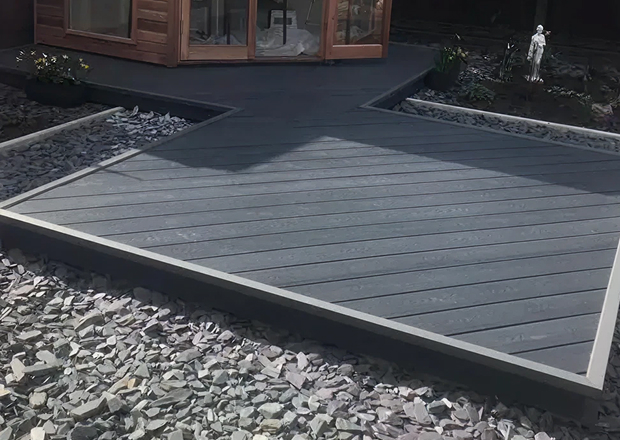
Verdict: Ensure your base is stable and solid, remembering to provide the appropriate amount of drainage to avoid water pooling; test before laying your tiles to be on safe side.
if you currently have an existing concrete base – this is great news! Your decking tiles (wood or composite) can be lain onto your pre-existing concrete base or paving; do ensure you have no water pooling or cracks as these will need be repaired before installing.
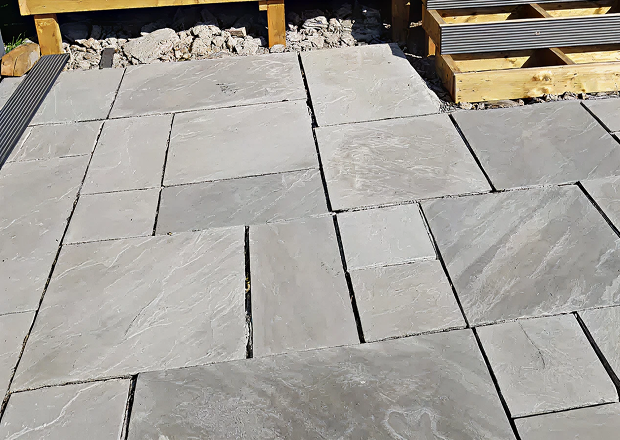
Verdict: There is, however, another possible method – we strongly advise against this; for those willing though, we advise a high-level of caution.
We have experienced some customers who have laid their decking tiles directly onto an old decking surface. Whilst this seems like a beneficial upgrade – we advise you to do this with caution.
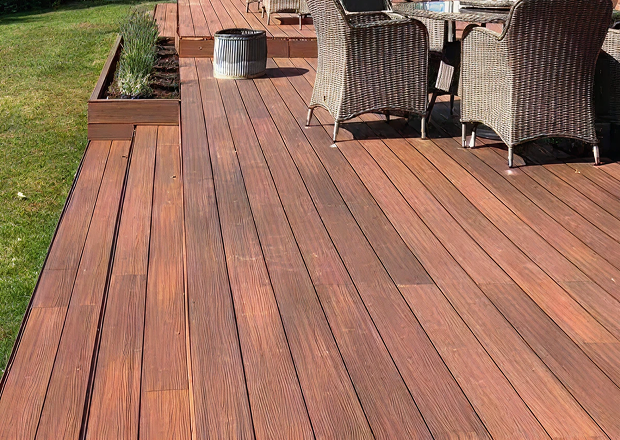
Our Warning: Most homeowners are replacing their old wooden deck because its colour has faded, or it has become worn; In most cases, this means the timber has already begun to rot, making it an unsafe foundation. Laying new tiles on top of decking will trap moisture and accelerate the decay of the boards beneath, creating a serious safety hazard. We do not recommend this method. – Review our replacing wood with composite article for an in-depth explanation on this*
Please note: Maintenance costs are estimated. Our wood decking maintenance figure is based on one annual sealing/staining job, including an average material cost of £30 and 4 hours of labour valued at £13.50/hr. Monthly cleaning time is also valued at £13.50/hr.*
In most cases, even though decking tiles may be a quick solution for your garden, (for those who are looking for a short-term fix – they’re great) but if you are looking for a long-term solution, requiring low-levels of care, then why not consider purchasing full length composite decking boards?
Composite decking may cost more upfront but is a worthwhile investment due over timber-based decking; this is due to its many beneficial qualities, lasting more than a 5-year period, higher colour retention and longevity, and requiring minimal upkeep. Composite decking can provide a strong return on your investment, when installed correctly – lasting 10-25+ years.
Ready to upgrade your plan?
 Previous Article
Previous Article
Cost Of Installing Composite Decking

Thinking of Covering Your Old Deck? This UK Expert Warning Could Save You £1000’s